Plants are amazingly diverse and used by humans in so many ways, not forgetting their intrinsic connection to all other beings. Here in the Top End we have an abundance of incredible native plants in our landscape and the ability to grow a huge array of Tropical plants for amenity, aesthetic value, happiness, food or in this case dyes.
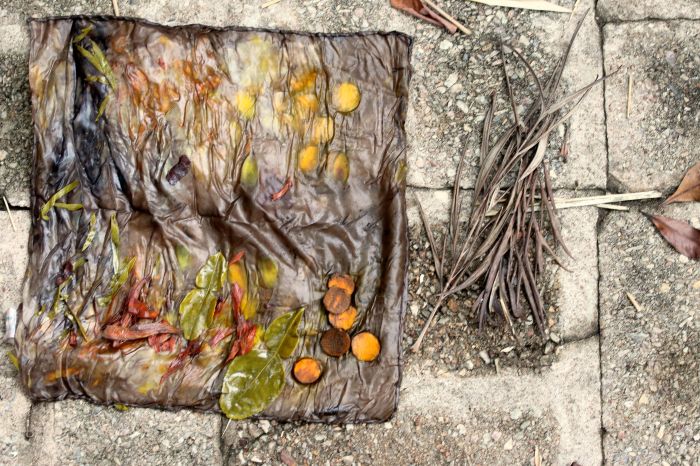
We have had a bit of a focus on wild food with GULP with a recent twist on dyeing.
Aly de Groot is a local fibre artist inspired by the NT flora and fauna. She has lived and worked in the Top End with local plants as fibres and dyes for many years, often working with indigenous communities on ghost net projects and recycled arts. Using the inspiration of traditional techniques to create a whole other realm of fibre art.
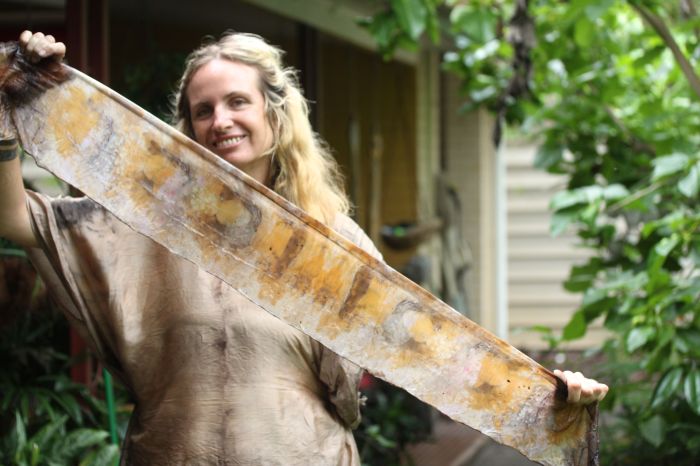
When Aly offered to facilitate a workshop for GULP using back yard plant dyes before she leaves to Queensland (hopefully not forever) we snapped up the fantastic opportunity for her to share her skills.
The workshop was open to anyone interested, but we limited the numbers so it was not too crammed. An enthusiastic group of wonderful Darwin residents came together on Summer solstice with local food dishes to share, ideas of dye plants and some great enthusiasm. The idea was that Aly guided the morning session and shared her dyeing techniques and after a shared lunch anyone wishing to carried on with experiments of collected plants that we thought might make good dye.
In the morning we went for a little wander in Rapid Creek (the suburb and to the creek edge) to collect some plant material. The rule when collecting is to only take a little from each plants, particularly if it is flowers or fruit, so the plant can still reproduce. We were just looking for Eucalypts or Melaleuca trees with low lying leaves; which are very common and the Weeping Teas Tree (Leptospernum maddium) is very common as a nature strip tree, but usually found along creek edges.

There are many native plants that you can dye with, but we don’t want to encourage everyone to go ripping up Mangroves or native shrubs from the bush, so we have stuck to those easily grown in gardens or replenished.
The Eucalyptus leaves make up a dye bath for the base of dyeing. This can be any plant that is plentiful and will make the base of the colour. Late on we also used green tea. Eucalyptus or Melaleuca leaves make a grey, brown colour and green tea more of a yellowy green colour.
The next step is to choose the dye plants or objects that will make the pattern.

We tried garden turmeric root, Ceylon Spinach berries, Amaranth flowers,

Kaffir lime leaves, turmeric (again), Stinky Cheese Fruit root (Monrinda citrifolia)- a common naturalised Top End plant that pops up in gardens and Weeping Tea Tree Leaves.

Frozen rosella calyx, like those you would make jam with, were also trialled.

Then different dye plants and rusty treasures are laid onto the silk fabric…

Rusty nails and old items make great dark patterns, dry tea is added to make orange patches, some onion peel and Okinaoa spinach thrown in for measure and experimental purposes, each placed to add not only colour but pattern through texture.

Once an agreeable amount of plants are placed inside the material is tightly wrapped up.

The parcels of botanical goodness are wrapped really tightly, with plastic string and other rusty wire adornments and then boiled in the base dye bath.

After boiling them for an hour or more, they are pulled out and like Christmas presents, the surprises inside revealed.

The fabric is then rinsed off and ironed. Silk is used as it takes on colours more readily and does not need as many mordents as cotton. Traditionally in the NT strips or strings of plant fibres are dyed then woven; usually Pandanus or Sand Palm.
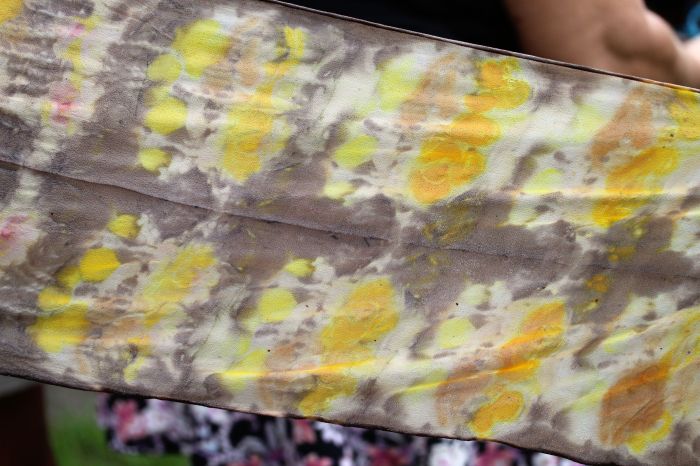
Noni (Stinky Cheese Fruit) root, turmeric root, dried tea leaves , rosella and kaffir lime leaves were very effective. The scarves were a fantastic outcome and grew our love of local plants even more.
More plant dye experiments and workshops are planned by the GULP team…
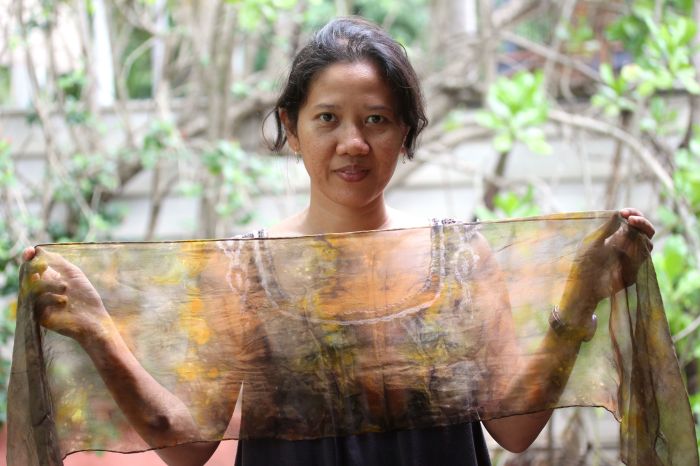
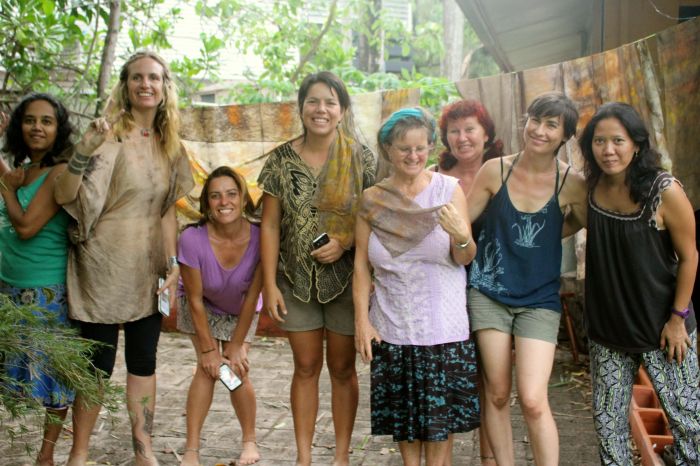
Thanks Aly for your inspiration, thanks City of Darwin for supporting GULP and thanks all participants for the great food and dyeing ideas…
Words and photos by EM Lupin















Reblogged this on tasteofthetopend and commented:
This was the lovely Botanical Alchemy workshop we ran through GULP (Growing and Understanding Local Produce) last year, using only plants growing in backyards and on nature strips.
Has ‘tasteofthetopend’ ever published/featured an article on how to use our local bamboo [Bambusa Arnhemica] ?, or have you any plans of doing so?. Fresh bamboo shoots plentifull at present.
Cheers Kai Hansen.
Good work i greet you in the spirit of all living and growing things,